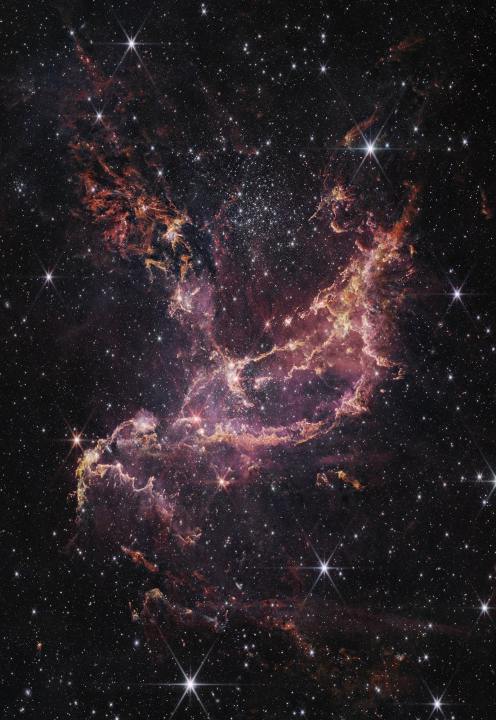A stunning new image from the James Webb Space Telescope shows a stellar nursery called NGC 346, which is not only beautiful but is also leading astronomers to rethink their theories about how stars and planets could have formed in the early universe.
The star cluster NGC 346 is a busy region full of star formation and is located in the nearby Small Magellanic Cloud, a satellite galaxy of the Milky Way. The composition of the Small Magellanic Cloud is rather different from that of the Milky Way, as it has fewer heavier elements. As dust is typically composed of these heavier elements, astronomers thought that there would be less dust in the Small Magellanic Cloud — but that’s not what Webb found.

Instead, Webb found abundant dust as well as hydrogen, which means this galaxy has the building blocks not only for stars but also for planets. This is interesting to astronomers who had wanted to study the Small Magellanic Cloud because its composition makes it similar to much older galaxies that existed in a period of the universe called the cosmic noon, around 2 to 3 billion years after the Big Bang.
“A galaxy during cosmic noon wouldn’t have one NGC 346 like the Small Magellanic Cloud does; it would have thousands,” leader of the research team, Margaret Meixner of the Universities Space Research Association, explained in a statement. “But even if NGC 346 is now the one and only massive cluster furiously forming stars in its galaxy, it offers us a great opportunity to probe conditions that were in place at cosmic noon.”
The fact that there could be materials required to create rocky planets in such a galaxy raises questions about the timeline of planet formation in the universe. “We’re seeing the building blocks, not only of stars but also potentially of planets,” said co-author Guido De Marchi of the European Space Agency. “And since the Small Magellanic Cloud has a similar environment to galaxies during cosmic noon, it’s possible that rocky planets could have formed earlier in the universe than we might have thought.”



